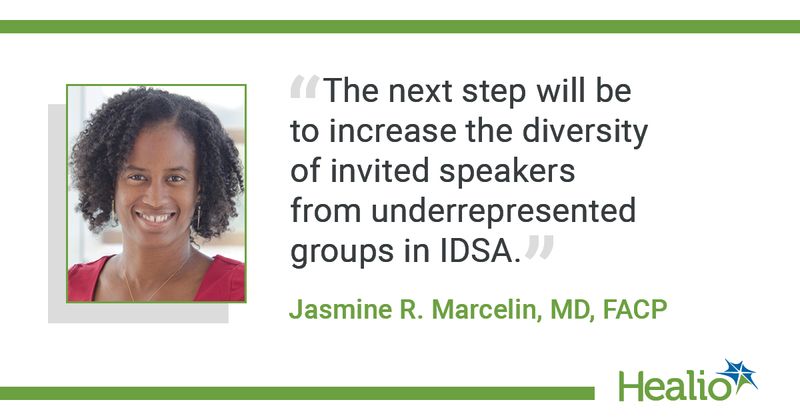Efforts to ensure gender equity at IDWeek have worked, analysis shows
Click Here to Manage Email Alerts
Efforts by IDWeek’s program committee to ensure gender equity during the conference led to a more than 13 percentage-point increase in the proportion of speaker slots filled by women since 2013, according to an analysis.
However, the analysis also showed that these efforts did not improve the diversity of invited speakers among individuals from groups that are underrepresented in Infectious Diseases Society of America membership, researchers reported.

“The next step will be to increase the diversity of invited speakers from underrepresented groups in IDSA, as the society continues to apply the principles of inclusion, diversity, access and equity at IDWeek,” Jasmine R. Marcelin, MD, FACP, assistant professor of infectious diseases and associate medical director of the antimicrobial stewardship program at the University of Nebraska Medical Center, told Healio.
Marcelin and colleagues examined speaker demographic information from IDWeek meetings from 2013 to 2019, excluding poster sessions. They reviewed information from a total 2,504 individuals.
According to the analysis, the proportion of speaker slots filled by women increased from 38.6% in 2013 to 52.1% in 2019 (P = .001). IDSA membership racial distributions for the time period was 67.5% white, 20.6% Asian, 7.7% Latinx, 3.9% Black and 0.4% other. The racial distribution of speakers during the study period was 77.7% white, 13.9% Asian, 4.7% Latinx, 2.7% Black and 1% other.
“It is often incorrectly thought that gender equity initiatives will have a trickle-down effect on race/ethnicity or other identities,” Marcelin said. “This data shows that this is not the case, and without an intentional strategy addressing racial/ethnic or professional inequities in speaker representation, this will not be achieved.”
The 2,504 individuals included in the study filled 3,640 total speaker slots. The percentage of participants invited to speak more than one time varied by age — 19% were younger than 40 years old, 28% were 40 to 49 years old, 32% were 50 to 59 years old and 22% were older than 60 years old (P = .001).
The proportion of pharmacist speakers (5.1%) in 2019 accurately reflected overall IDSA pharmacist membership (5.4%), Marcelin and colleagues found.
“It was very heartening to see that the proportion of pharmacist speakers in 2019 matched the proportion of pharmacist members in IDSA and that represented an increase over time,” Marcelin said.
This was the first longitudinal study of speaker representation at IDWeek, although other specialties have taken note of gender diversity challenged for their speakers, Marcelin said.
“We did not break down the type of speaking opportunity by oral abstracts versus plenary versus other types of speaking opportunities, but plan to look at this a little more closely, as data in other specialties have shown gender inequities in the invitations for more prestigious invited and named plenary talks,” Marcelin said.

